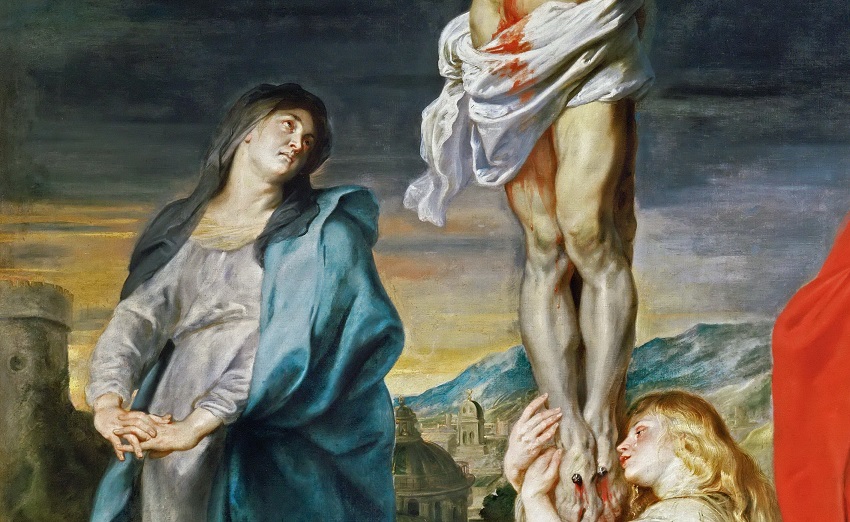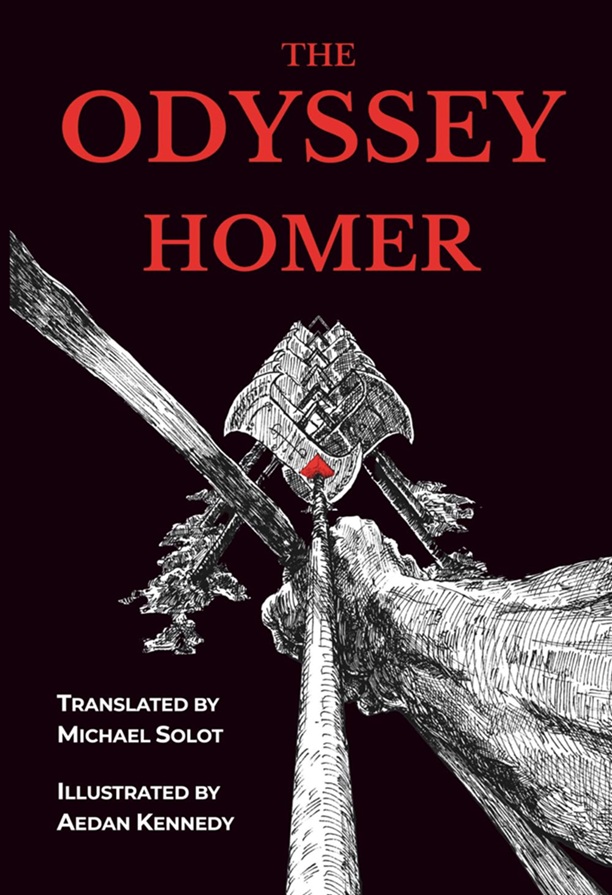.
Behold the Queen of Heaven weeping, seeping
__Tears that rend her heart and ours. As one
__Who mourns she grasps and clasps the seeming-sleeping,
__Pierced, and bloodless body of her son.
A body void of God’s expired breath;
__A pietà of human flesh and bone
__Where heaving, grieving love and lifeless death
__Transcend the art of sculpted, marbled stone.
Yet love and life, now dead to death and sin;
__Shall rise again, and with the sinless Lamb
__Shall be reborn, set free from what has been
__By grace embraced by He who is I AM.
Then shall the Mater Dei’s tears be dried;
Her joy complete; her sorrows sanctified.
.
.
James A. Tweedie is a retired pastor living in Long Beach, Washington. He has written and published six novels, one collection of short stories, and three collections of poetry including Mostly Sonnets, all with Dunecrest Press. His poems have been published nationally and internationally in The Lyric, Poetry Salzburg (Austria) Review, California Quarterly, Asses of Parnassus, Lighten Up Online, Better than Starbucks, WestWard Quarterly, Society of Classical Poets, and The Chained Muse.















What a great day it has been here at the Society. Your poem, James, completes the triptych revolving around the second member of the Trinity, and now I feel suitably washed in the blood. Historical dates mean little when it comes to movable holidays, and even less when the focus is on remembrance, for memory takes us beyond time. For me, reading all of these poems has been like going to church, something I do all too seldom, so I would like to thank you and the others for the service you provided. It’s good to consider where we’ve been and where we might be going. As the saying goes: Everybody wants to go to heaven, but nobody wants to die. That cup shall pass none of us by, and memento mori is something we should always bear in mind in regard to ourselves, to others, and to the Son of Man.
Thank you, C.B. Writing this poem was an act of worship for me so I’m glad to hear that you experienced it as such. As many of us do, I wrote the poem for myself. In sharing it, there is always the hope that it may have also been written for someone else. I am glad it spoke to you today.
James, your pairs of words reflect the influence of Hebrew parallelism, as found in the Psalms, and the internal rhymes add English-language charm to them. The thought as line 11 goes into line 12 is a little cryptic to me at first reading, but the magnificent couplet makes up for this. “Sorrows sanctified” is surely the ultimately strength and joy and crowning achievement of the Mother of God.
Margaret, thank you for your comment. I agree that the lines referenced represent a complex sentence, complicated further by a mistaken semi-colon.
When written and punctuated as prose with the addition of a few qualifying words, perhaps it reads better:
Love and life (now dead–with death and sin also having died) shall rise again. With the sinless Lamb (the crucified Jesus) they (love and life) shall be reborn, set free from what has been (ie the bonds of death). And this made possible by grace eternally embraced by He who is I AM (which is a reference to both the Father and the Son).
A bit thick to unpack, perhaps, but squeezing Good Friday and Easter into four lines is a big bite that requires a certain amount of chewing if it is to be digested fully!
The transition moves us from Mary’s grief at the deposition into the entombment, the descent into Sheol (with hints of the harrowing of hell), and through to the resurrection and salvation that is ours by the grace of God.
The closing couplet returns us to Mary, and the redemption of her tears.
Mr Tweedie, as a musician here in England, you have persuaded me to pick up the guitar and re-learn the sublime “El Noi de la Mare” which is a lovely piece to play.
Best wishes to you and yours for a restful and peaceful Easter.
The arts, when in tune, sing to each other, don’t they! May your music be a blessing to you and others who will share in it.
Very moving, Mr. Tweedie, especially “… love and life, now dead to death, shall rise again …”: you seem to make the point that when Our Lord said, “I am … the life,” he meant not only the life for us in him, but is own life.
You also turn one’s thoughts toward the unrecorded life of Mother and Son after the Resurrection.
A beautiful poem which I find extremely moving. I especially love the last line, “Her joy complete; her sorrows sanctified.” The authentic transcendence of pain in six words. Well done. And Happy Easter!
James, you have managed to convey both the agony and the imminent elation vested in the endurance of Mary as depicted in that “pietà of human flesh and bone”. Your words most certainly transcend any physical image to enter the hearts and humble all those who are celebrating Easter. Thank you!